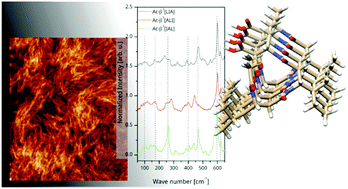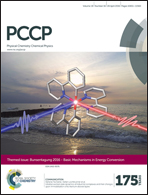Structural analysis of bioinspired nano materials with synchrotron far IR spectroscopy
Abstract
Bioinspired fibres and hierarchical nano-materials are based on the self-assembly of organic building blocks such as polypeptides. Confirming the core structure of such materials is often challenging as they lack the long-range order required by crystallographic methods. Far-IR spectroscopy characterizes the vibrational modes of large molecular units. These vibrational modes are very sensitive to angle strain and second order interactions such as hydrogen bonding. As such, far-IR spectra hold information about the secondary structure and interactions of large biomolecules. Here we analyze the far-IR vibrational spectra of fibrous nano-materials based on three isomeric unnatural tripeptides, Ac-β3Leu-β3Ile-β3Ala, Ac-β3Ile-β3Ala-β3Leu, and Ac-β3Ala-β3Leu-β3Ile. These peptides have well described self-assembly characteristics, forming one-dimensional nanorods that impose tight conformational constraints on the constituent molecules. The synchrotron far-IR spectroscopic results were interpreted by using density functional theory (DFT) modelling based vibrational analysis. The sensitivity of the spectra to peptide conformation was assessed by comparing the experimental spectra with DFT predictions. In high dielectric implicit solvent, intramolecular hydrogen-bonding is inhibited and thus the energy minimized peptide structure remains close to the 14-helix folding characteristic of substituted β3-peptides, giving good agreement between the experimental and predicted vibration spectra. In contrast, energy minimization in vacuum alters the peptide conformation leading to intramolecular hydrogen bonds, and hence the predicted vibration spectra do not agree with the experimental data. Therefore, our results demonstrate the ability of far-IR spectroscopy to identify correct structural predictions and thus open the way for using far-IR spectroscopy for the characterization and structural analysis of bioinspired nano-materials and potentially their interactions with surfaces, ionic environments and other biomolecules. Far-IR structural analysis is particularly powerful in case of one- and two-dimensional materials such as fibres, hydrogels and thin layers where standard crystallographic analysis is not available.


 Please wait while we load your content...
Please wait while we load your content...